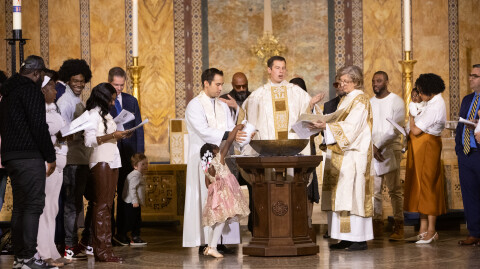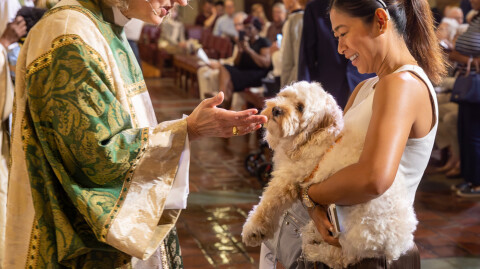Church musicians have long loved the phrase “one who sings prays twice.” If this is phrase is true, and if it is also true that what we pray shapes what we believe, then what and how we sing must have even more of an impact on us than our spoken prayers. Music informs, engages with, and reflects back our deepest emotions and strongest beliefs. You can learn a lot about someone from the music they love.
Two hymns in The Hymnal 1982, the official hymnal of The Episcopal Church, stand out from all the rest: #599, Lift Every Voice and Sing, and #720, The Star-Spangled Banner. These two musical selections are not merely hymns (indeed, despite its inclusion in our hymnal, The Star-Spangled Banner is arguably not even a hymn at all). They have also been designated as national anthems, the first as the “Negro National Anthem,” or, more recently, “the Black National Anthem,” and the second as the National Anthem of the United States of America. They are sacred songs—and yes, even The Star-Spangled Banner, in its full form, mentions God—but they are also patriotic ones that have been officially designated for civic purposes.
What do these two songs and their shifting roles within the American landscape have to teach us about the kind of people we are as Americans and as Christians? In recent years, Lift Every Voice and Sing has risen tremendously in prominence. Long a staple in Black contexts, it has only lately become a selection widely recognized by non-Black Americans. In 2018, Beyoncé sang it as part of her Coachella performance. In 2021, Congressman James Clyburn proposed that it be named our national hymn. Earlier this year, Sheryl Lee Ralph sang it at the Super Bowl. We now sing it twice each year at St. Bart’s—on the Sunday closest to Martin Luther King, Jr. Day and on the Sunday closest to Juneteenth. Increasingly, the Black national anthem is becoming a more general national anthem for all of us as we refocus our attention on the crucial task of working towards racial justice.
At the same time, and for similar reasons, The Star-Spangled Banner has become a more contested piece. The Star-Spangled Banner has never been universally popular, with criticisms ranging from the inaccessibility of its tune to the violent aspects of its lyrics. Contemporary conversations, especially in the years following Colin Kaepernick’s protests, tend to gravitate towards the song’s problematic relationship with slavery: the fact that Francis Scott Key, the writer of its words, was himself a slaveholder and the fact that the third verse of the anthem explicitly mentions slavery. Some wonder if we should abolish The Star-Spangled Banner and choose a new anthem, and churches like St. Bart's have debated whether it is appropriate to sing The Star-Spangled Banner in services. Meanwhile, many Americans, especially those with connections to the military, continue to see it as an anthem of freedom that pays tribute to those who serve.
It may be tempting to see Lift Every Voice and Sing and The Star-Spangled Banner as wholly unique animals and as products of entirely distinct contexts and eras. But, in many ways, their stories are related and intertwined. The words of The Star-Spangled Banner were only written by Francis Scott Key 76 years before James Weldon Johnson and his brother J. Rosamand Johnson collaborated on Lift Every Voice and Sing for a celebration of Abraham Lincoln’s birthday. Lift Every Voice and Sing was actually declared the “Negro National Anthem” by The National Association for the Advancement of Colored People (NAACP) fourteen years before Congress made The Star-Spangled Banner the national anthem of the United States. Both texts are meditations on struggle, liberty, and national identity—and they contain striking similarities as well as poignant differences.
Over the next six Wednesdays, I hope you’ll join me on Zoom for discussions about Lift Every Voice and Sing and The Star-Spangled Banner. What role can and should these two anthems continue to play in the life of our nation and in the life of our Church? How do these two musical pieces speak to one another, to our history, and to the issues of our time? As we approach the observances of Juneteenth, our newest federal holiday, and Independence Day, one of our oldest ones, I can’t think of better and more relevant questions to ask.



